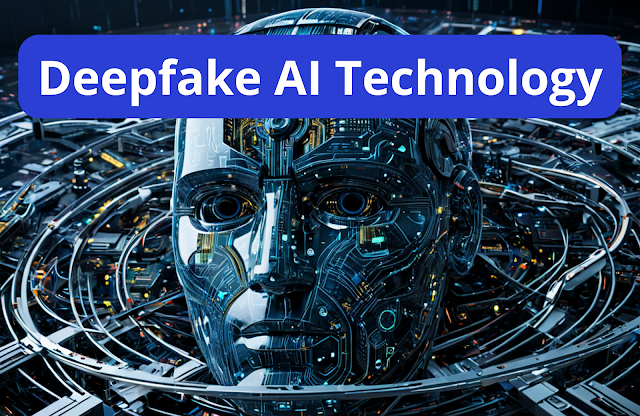Deepfake AI Technology
Deepfake AI Technology: The Future of Manipulation and Ethics
In the fast-evolving world of artificial intelligence, deepfake technology has emerged as a significant breakthrough, simultaneously fascinating and concerning experts, media, and the general public. Deepfakes are AI-generated media that convincingly mimic real people, their voices, and their movements. While this technology can revolutionize industries such as entertainment and communication, it also poses significant ethical, social, and political challenges.
This article provides a comprehensive analysis of deepfake AI technology, exploring its origins, how it works, its applications, and the concerns surrounding its misuse. We will also discuss the steps being taken to combat its negative impacts and what the future holds for this controversial AI advancement.
1. What is Deepfake AI Technology?
At its core, deepfake technology refers to the use of artificial intelligence (AI) and machine learning (ML) techniques to create hyper-realistic digital representations of people. These representations are not just images but can include full-motion videos and audio. With enough data, AI models can simulate a person’s face, voice, and even mannerisms in ways that make it almost indistinguishable from reality.
The term “deepfake” is derived from “deep learning,” a subset of machine learning, and “fake,” highlighting the technology’s ability to create realistic but fabricated media.
Deepfakes can take many forms, including:
- Face-swapping in videos or photos.
- Voice synthesis to mimic someone’s speech pattern and tone.
- Lip-syncing videos to match a person’s mouth movements with different audio tracks.
2. The Origins of Deepfake Technology
Deepfake technology traces its roots back to Generative Adversarial Networks (GANs), first introduced in 2014 by AI researcher Ian Goodfellow. GANs consist of two neural networks: a generator and a discriminator. The generator creates synthetic data (in this case, fake media), while the discriminator attempts to detect the real data from the fake. Over time, both networks improve their performance, allowing the generator to create increasingly convincing fakes.
Deepfakes gained mainstream attention around 2017 when amateur programmers began experimenting with the technology, creating fake celebrity videos and sharing them on social media platforms. What started as an amusing novelty quickly spiraled into an area of concern as the potential for misuse became evident.
3. How Does Deepfake Technology Work?
At a technical level, deepfakes rely on several advanced AI techniques:
- Deep Learning: Deep learning algorithms, especially convolutional neural networks (CNNs), analyze large amounts of video, images, and audio data to learn how a person looks and sounds in various contexts. The more data the AI has, the more accurate the deepfake becomes.
- Generative Adversarial Networks (GANs): As mentioned earlier, GANs are used to create realistic images and videos. The generator produces fake content, while the discriminator evaluates its authenticity. The iterative process results in highly realistic media.
- Autoencoders: This neural network model is trained to compress and reconstruct data. When applied to faces, autoencoders help produce a model that understands the intricate features of a person’s face, enabling realistic face-swapping.
- Voice Cloning: In addition to visual data, deepfake technology uses text-to-speech (TTS) systems to clone voices. Neural networks analyze hours of audio recordings of a person and recreate their vocal tone, inflection, and speech patterns.
The Process of Creating a Deepfake
The creation of a deepfake typically involves several steps:
- Data Collection: Collecting a significant amount of data on the subject (e.g., photos, videos, or audio files) is crucial.
- Training the Model: AI algorithms, particularly GANs and autoencoders, are trained using the collected data.
- Face Mapping or Voice Modeling: Once trained, the model maps the target’s face or voice onto the desired output.
- Post-Processing: Final tweaks are made to ensure the deepfake looks or sounds as realistic as possible.
4. Applications of Deepfake AI
Entertainment and Cinema
Deepfakes are revolutionizing the entertainment industry. From recreating deceased actors to aging or de-aging current stars, filmmakers can use AI-generated faces to enhance their storytelling capabilities. Some notable uses include:
- “The Irishman” (2019): Martin Scorsese’s movie famously used de-aging technology to make older actors appear younger.
- Recreating Historical Figures: AI can resurrect long-gone personalities, allowing them to “appear” in new movies or documentaries.
Social Media and Content Creation
Social media platforms have become fertile ground for deepfakes. Users can now create face-swapped videos or mimic celebrities with simple apps. While many use it for fun, the rise of social media influencers has brought more attention to deepfake content, raising concerns about authenticity.
Educational Tools and Learning
In education, deepfakes hold potential for immersive learning experiences. Imagine virtual classrooms where historical figures or famous scientists like Albert Einstein give lectures, or students can “interact” with Abraham Lincoln or other key figures from history.
Marketing and Advertising
Deepfake technology can significantly enhance personalized advertising. Brands can create tailored commercials where viewers see familiar faces delivering customized messages. This targeted approach could potentially increase user engagement and brand loyalty.
5. Ethical Concerns and Risks
As with any powerful technology, deepfakes come with significant risks and ethical concerns.
Political Manipulation
One of the gravest concerns regarding deepfakes is their potential use in political propaganda. Deepfakes could be used to create fake videos of politicians saying or doing things they never did, influencing elections, sowing discord, or manipulating public opinion.
For instance, deepfake videos could be strategically released during an election cycle to portray a candidate in a negative light, potentially swaying voters and altering the outcome.
Cybercrime and Fraud
Cybercriminals are increasingly using deepfake technology for identity theft and fraud. By impersonating individuals, particularly in high-stakes financial or business contexts, criminals can deceive organizations into making large financial transactions or sharing sensitive information.
One high-profile case involved a deepfake voice used to impersonate a CEO in a phone call, leading to the fraudulent transfer of over $240,000.
Erosion of Trust in Media
As deepfakes become more sophisticated, distinguishing between real and fake content becomes increasingly difficult. This erosion of trust in media could lead to a scenario where people become skeptical of any digital content, regardless of its authenticity.
Personal Harm and Defamation
Deepfake pornography is a growing issue, with individuals, particularly women, being targeted. Malicious actors create fake videos that damage a person’s reputation, often without their knowledge. Victims of such deepfakes often face immense psychological distress and social harm.
6. Legal and Regulatory Responses
Governments and organizations worldwide are beginning to respond to the rise of deepfakes. In 2019, the state of California passed laws banning the use of deepfakes in political campaigns. The European Union is also working on strict AI regulations under its Artificial Intelligence Act, which aims to prevent the misuse of AI technologies.
Tech companies like Facebook and Twitter have implemented policies to flag or remove deepfake content, while platforms like YouTube have outright banned malicious deepfakes.
7. Technological Solutions to Deepfakes
Several technological solutions are being developed to detect and combat deepfakes:
- Deepfake Detection Algorithms: These AI-based tools analyze subtle inconsistencies in videos, such as unnatural eye movements or irregular facial expressions, to identify deepfakes.
- Blockchain for Media Verification: Blockchain technology can be used to create an immutable record of a video’s origin and verify its authenticity.
- Watermarking Technology: Embedding invisible watermarks in videos can help verify the source of the content, making it easier to detect if it has been tampered with.
8. The Future of Deepfake Technology
Despite the challenges, deepfake technology is not going away. Its potential in various industries is enormous, but so are the risks. Moving forward, it will be crucial for developers, regulators, and society to find a balance between leveraging the positive aspects of deepfakes while minimizing their misuse.
The rapid advancement of AI ethics and regulatory frameworks will play a critical role in shaping the future of this technology. Additionally, public awareness and media literacy will be essential in fostering a discerning audience capable of recognizing and questioning deepfake content.
9. Conclusion
Deepfake AI technology represents both a remarkable innovation and a profound ethical dilemma. While its applications in entertainment, education, and marketing hold incredible potential, the dangers it poses to political integrity, personal privacy, and societal trust cannot be ignored. As deepfake technology continues to evolve, it is crucial to develop effective safeguards to ensure it serves the public good rather than undermines it.

